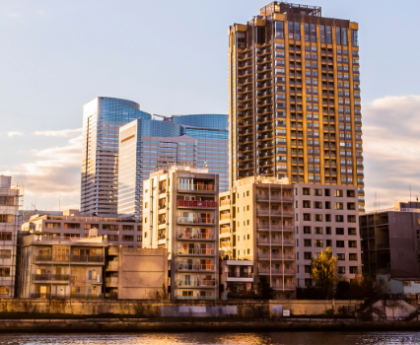“The problems facing most cities pale in comparison to San Francisco,” Capital Economics wrote recently. When the pandemic hit, the once superstar city spiraled into a perpetual doom loop seemingly overnight as offices emptied, stores shuttered, and residents fled to the Sunbelt.
“A high share of tech, high rent levels, expensive housing, and a growing crime and homelessness problem downtown all mean that San Francisco office owners are set for a torrid time over the coming years,” Capital Economics wrote last summer, most recently predicting a wipeout of 50% in the city’s office values.
It looked bleak. And while San Francisco’s office sector is not out of the woods yet, it’s seeing a ray of hope from the city’s generative artificial intelligence startups. The hype surrounding AI, though it can feel like too much, might actually resuscitate San Francisco offices, and put an end to its doom loop narrative.
“San Francisco went through a very low low, and we heard words of doom loop, and now we’re going through what I think a lot of people see as just the nascent beginning of a recovery,” Alexander Quinn, senior director of Northern California research for JLL, or Jones Lang LaSalle, a real estate services company, told Fortune.
All commercial real estate was affected by higher interest rates following an era of cheap money, but of course, offices bore the brunt of it. The pandemic changed the way people live and work—offices fell victim to the rise of remote work, and cities including San Francisco became poster children for commercial real estate woes. As of the fourth quarter of last year, office vacancies in the city were at an all-time high of 32%, Quinn said.
“It’s only in the downtown where we’re seeing that erosion,” he explained. People are working, which is reflected in the city’s low unemployment rate—it’s just where they work has changed.
While many companies are generally shrinking their office footprint, AI startups are undergoing a massive expansion in terms of their office space, Quinn said. It could be because such companies push for in-person collaboration. Either way, “we’ve just seen [them] double down on office space, whereas some of the older tech [companies] have in fact reduced their footprint in the city … so really, where we’re seeing the growth is more on the AI side,” Quinn said.
By the end of last year, AI companies had leased 3.9 million square feet of office space, a 50% increase from the previous year, according to Quinn, and made up roughly 28% of leasing activity within the office space. “It’s definitely a tailwind in our market,” Quinn said. “We’re seeing them grow quite dramatically year over year.”
“Last year was a banner year for AI,” Quinn said. OpenAI leased out more than 480,000 square feet of office space in San Francisco last year; the San Francisco Chronicle called it one of the largest leases in the city’s history. And Anthropic leased out around 230,000 square feet the same year. By the end of this decade, Quinn anticipates 12.5 million square feet of office space will be leased by artificial intelligence companies or startups. His prediction is based on the historic growth rate of their footprint and PwC’s estimates for total growth rate for AI generally, he said.
This year, Quinn expects a slightly lower share of leasing activity, with AI companies accounting for roughly a fifth of total demand. Still, “it’s well above historic averages,” he said.
“ChatGPT created a larger collective consciousness associated with AI that has been baked in San Francisco for some time,” Quinn said. “Its market adoption has increased dramatically. And firms across the globe recognize the value and the underlying importance of being in front of it.”
OpenAI’s ChatGPT is a smashing success that’s fueling investor sentiment, he said, and while it may not help all office sectors across the country, it’s clearly good for San Francisco. The mini-AI revival has created a sense of stabilization and has boosted investor confidence within the office market, Quinn said. “Before, there was general apprehension and concern about when do we find our bottom—I think we’ve found our bottom now,” he said.
Currently, JLL is seeing smaller leases between 10,000 and 30,000 square feet, rather than the massive OpenAI- and Anthropic-style leases, Quinn said. He added that two large deals are likely to happen this year in San Francisco, but declined to share details.
How office spaces are leased will be driven by the AI ecosystem, as Quinn put it, which has only bettered investor moods. In January of last year, companies looking for office space in San Francisco, or active requirements, as they call them, accounted for around 3.7 million square feet, he said. Just over a year later, that figure jumped to 5.5 million square feet.
We won’t know if it’ll change national sentiment surrounding San Francisco (although many city residents are feeling just fine). But Quinn, who called it a city of a series of gold rushes, noted that San Francisco has a propensity for risk.
“We are a boom-bust city historically,” he said. “We went through an extreme fall, and now we’re going through that recovery.”
Already, Quinn mentioned, downtown has changed. “You’re definitely experiencing a shift in the city, and there’s definitely more optimism in the city than there was a year ago,” he said.
This post was originally published on 3rd party site mentioned in the title of this site




